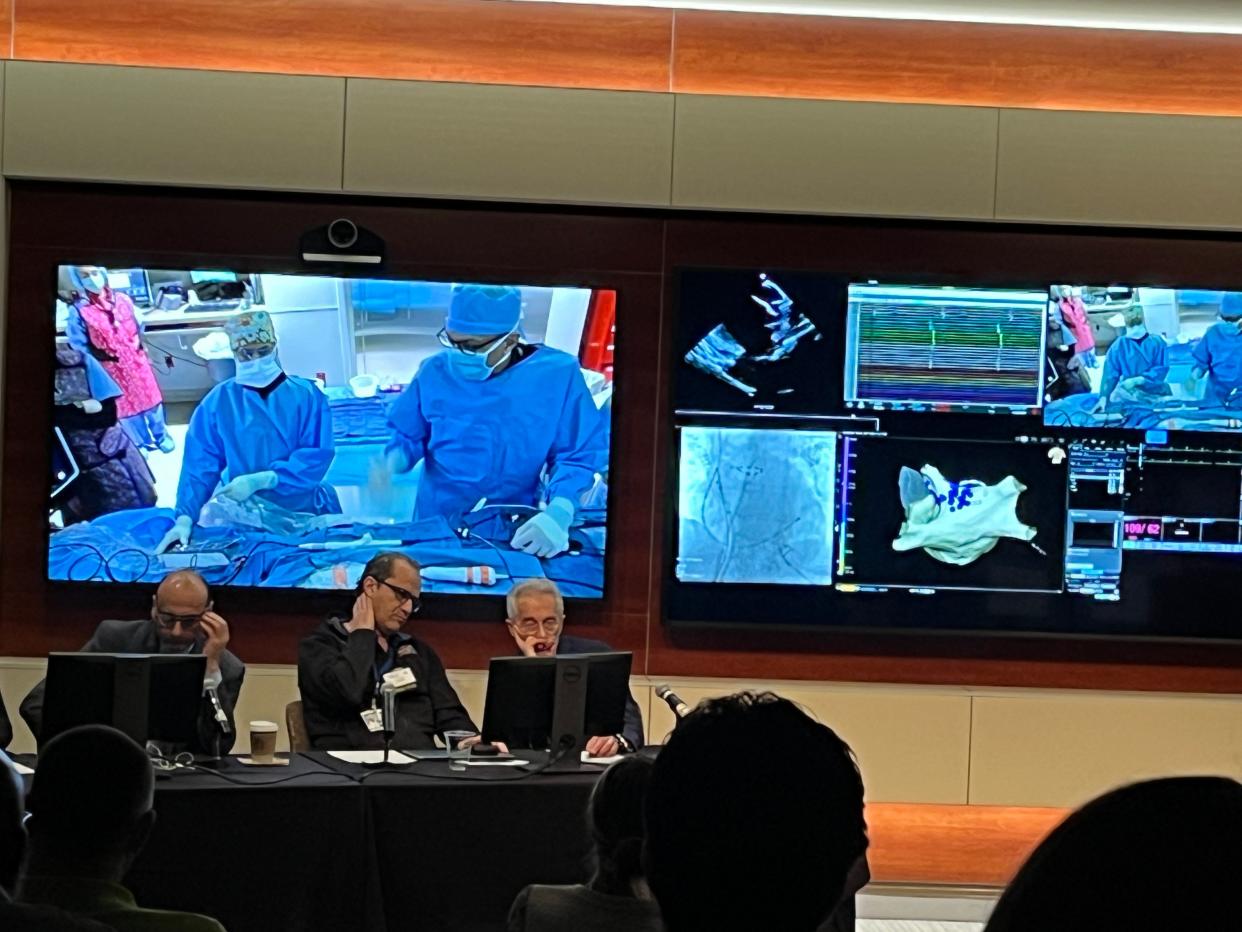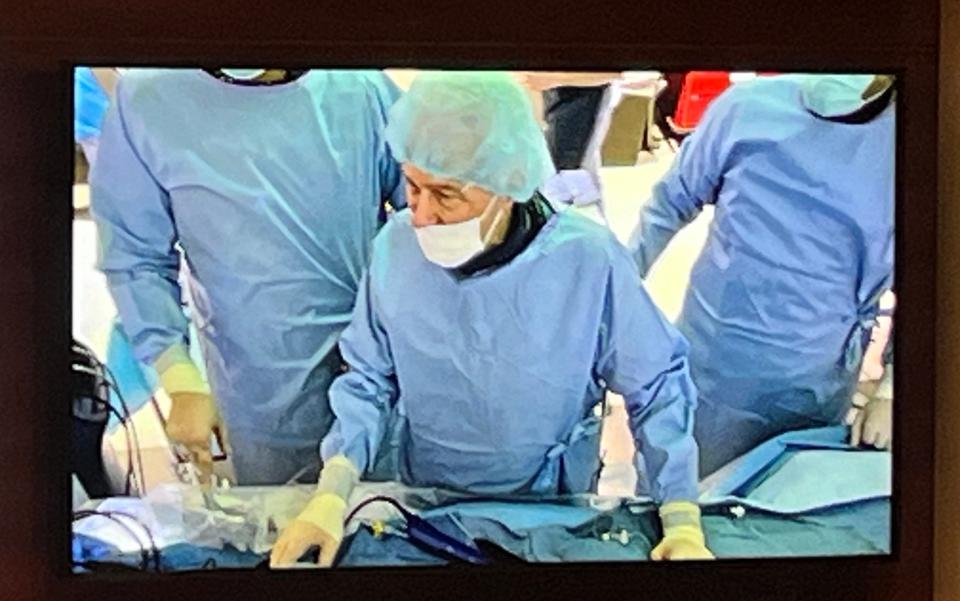Live from Austin: Heart surgeries at St. David's use new technology while world watches

Doctors from around the world came to Austin, or watched online, as doctors at the Texas Cardiac Arrhythmia Institute at St. David’s Medical Center demonstrated a new kind of heart ablation system this month.
Every two years, St. David's hosts EPLive, a conference for electrophysiologists to watch people in their field perform live ablation surgeries in Austin and around the world using the latest technologies. The doctors can ask questions as the surgeries are being done.
During a cardiac ablation, doctors insert a catheter from the groin or the wrist into the affected area of the heart. They then purposefully damage the part of the muscle that is causing an irregular heartbeat.
What is pulsed field ablation?
At St. David's, doctors have started using the FaraPulse pulsed field ablation system, which uses high-frequency electronic pulses to damage the problem area. Unlike previous ablation systems that used cold (cryo) or heat (radio frequency), pulsed field ablation damages the muscle in a controlled way but without an extreme temperature change to the tissue. This can lessen the collateral damage to the surrounding tissue.
"The procedure can become way safer for the patients," Dr. Andrea Natale said at the conference. The cardiac electrophysiologist is the executive medical director of the Texas Cardiac Arrhythmia Institute at St. David’s Medical Center and EPLive course director.

Dr. Amin Al-Ahmad, the co-director of the course, who works alongside Natale, said the pulsed field ablation system he was using was easier to manipulate than other techniques. Because the system might be easier, it could be used at smaller centers, not just the large cardiac arrhythmia centers like St. David's, he said.
While doctors still need to learn more about the technology, Al-Ahmad said, "this does democratize it."
Learn more: Austin becomes global draw for doctors learning about heart arrhythmia
Using 3D mapping technology, doctors watch several views of the catheter's trip to the heart. Once at the location that is causing the arrhythmia, they deploy the pulse and announce, "delivering." This lets everyone know the electronic pulse is being activated. Each spot where the catheter deploys a pulse shows up on the 3D map of the heart as a colored dot. Different catheters have a different shape, from basket and flower to circle and semicircle.
Is this the future of fixing heart arrhythmias?
The system isn't without its complications. With the pulsed field ablation, doctors give the patients fluids and medications preemptively to protect the kidneys as well as nitroglycerin to protect against spasms near the coronary artery.
The earlier technology, radio frequency or RF, sometimes requires a redo of the procedure. Pulsed field ablation appears to be more durable, Natale said.
"I am optimistic that this is going to replace cryo and a lot of RF as well," he said.
Doctors ultimately will decide which system to use based on what's most appropriate for the patient, Al-Ahmad said.
Because St. David's does testing of new technology before it is FDA approved, the hospital often gets systems at a lower price, Natale said. Once approved, insurance pays based on the procedure, not based on which system the doctor used.
This article originally appeared on Austin American-Statesman: St. David's new heart surgery techniques draw global crowd to Austin

